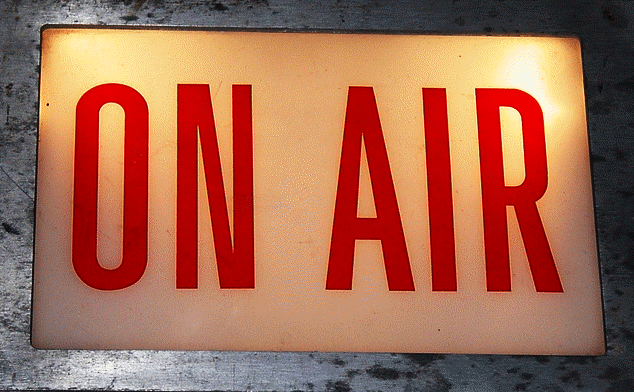
Coronavirus has changed a lot in the lives of TV companies. Workrooms have been partially emptied, the number of events has decreased, and the doors of medical facilities and isolation places have been closed for coverage.
The information transmitted to the audience is official, which reaches the media through official channels (on the Facebook pages of officials, the Government, the National Center for Disease Control and Prevention, the Armenian Joint Information Center).
The only opportunity for journalists to get information and communicate with officials is through the National Assembly and the online press conferences of the Government Press Center.
Outdoor filming has been taking place since mid-March, only when absolutely necessary, and mostly only courageous journalists of news programs take risks and talk to no less daring interlocutors in the fresh air.
There are no public events, the studio recordings where there is a mandatory audience have been postponed indefinitely.
The TV companies have switched to a live format in order to continue a number of programs, not to lose the audience and to keep their advertising contracts.
Live connections are most commonly used in news, political, and economic programs. They last anywhere between a few minutes to an hour or more. And since the audience has become accustomed to this kind of communication in recent years, the task is not complicated.
Yerkir Media
The guests of Yerkir Media’s Country Living Room come on and speak live, during which time there were only a few studio conversations. They started working live at the end of March.
And here we have the program The Country’s Question is mostly filmed in the studio, between two interlocutors, who keep the proper distance from each other.
“Foreign Country,” “Economic Country,” “Country Today: Sunday” programs mainly talk about what is happening. Communication with the journalist and the source is almost minimized, there are no shots taken outside, there are no comments from specialists and experts.
This type of media presentation is kind of sterile, it raises a lot of questions for a very clean audience than it does for clarifying the conditions of the epidemic. There are very few comments recorded directly in the videos and reports.
Yerkir Media has two culinary programs, plays and documentaries, children’s content and has no problem filling the air in any other way.
Armenia TV
There are many entertaining and comedic programs, local and foreign TV series on Armenia TV’s list of broadcasts. The variety of products helps the TV company to limit filming during emergencies.
Armenia TV organizes its work in accordance with the conditions of the state of emergency and changes the broadcast list of the network as needed.
These days, in order to keep live communication with the audience, a new TV format has started with the #home format. During the new program “Live at Home,” Robert Martirosyan and Garik Papoyan, each from his own house, join different people and have a TV evening.
The hosts of “Bari Luys” also communicate directly with the guests. Their news outlet is no different from other news outlets because the state of emergency has narrowed and limited coverage capabilities and topics.
Now the spring season is on air, there are several new TV programs. In fact, the programs for the spring season are helping to maintain the audience, but if the situation remains uncertain, there may be a problem with airing in the summer and fall.
Unlike Yerkir Media, where there are interviews and discussions that can be organized live, Armenian TV series and programs require filming where the number of people involved is high.
Shant
The approaches in Shant are different. For example, during the morning show, they communicate with the guests live, and during the “Mama’s cooking is different” program, the guests are in the studio.
The TV company has chosen the golden mean to limit people’s communication, if the work does not suffer, you can talk to people live. However, a number of studio programs where the number of people can reach up to ten have not been affected.
Following the broadcast, it becomes clear that Shant still has content in its reserve and can provide airtime until the summer. Most of the programs are local soap operas and comedy programs that were shot earlier and can be repeated if necessary.
First Channel
Public TV’s variety of broadcasts and the monopoly of broadcasting official information are being aired.
The newscast works with live connections. In the reports, you can find face-to-face as well as video conference call recorded commentary.
And in the interview genre, the programs are organized in the studio. For example, the program “We’ll Live, We’ll See” is broadcast live, another program, “Media Observer,” which has many guests and participants in the studio, is not on air at the moment.
Public has a specific approach for each program, and if it has to temporarily stop a program, it doesn’t have a problem filling it with other content. Especially since the TV company has a repository of feature films and cartoons translated into Armenian, which can be used mercilessly these days and keep many viewers near their screens.
“Public Lessons” and “Anatolian History” Telenovelas are being made public these days with the Armenian and Shant TV companies competing with each other in terms of ratings.
Other TV stations, which previously did not have their own big productions, now show sports programs and feature films, mostly without translation.
And if in the past the audience could be captivated with news programs (AR, Kentron, H2) and interviews, now they are in an unfavorable situation, because the news is the same everywhere and it is almost impossible to say anything new in these conditions.
In the case of the coronavirus, it is possible that the TV companies will switch to new formats because as long as there is a risk of spreading the infection, people will avoid going on the air and having face-to-face conversations.
The worries of TV companies are becoming more and more complicated. They now have to think about being competitive and keeping advertising on the one hand, and not losing their own production on the other hand.
Gayane Asryan
The views expressed in the column are those of the author's and do not necessarily reflect the views of Media.am.


Add new comment
Comments by Media.am readers become public after moderation. We urge our readers not to leave anonymous comments. It’s always nice to know with whom one is speaking.
We do not publish comments that contain profanities, non-normative lexicon, personal attacks or threats. We do not publish comments that spread hate.